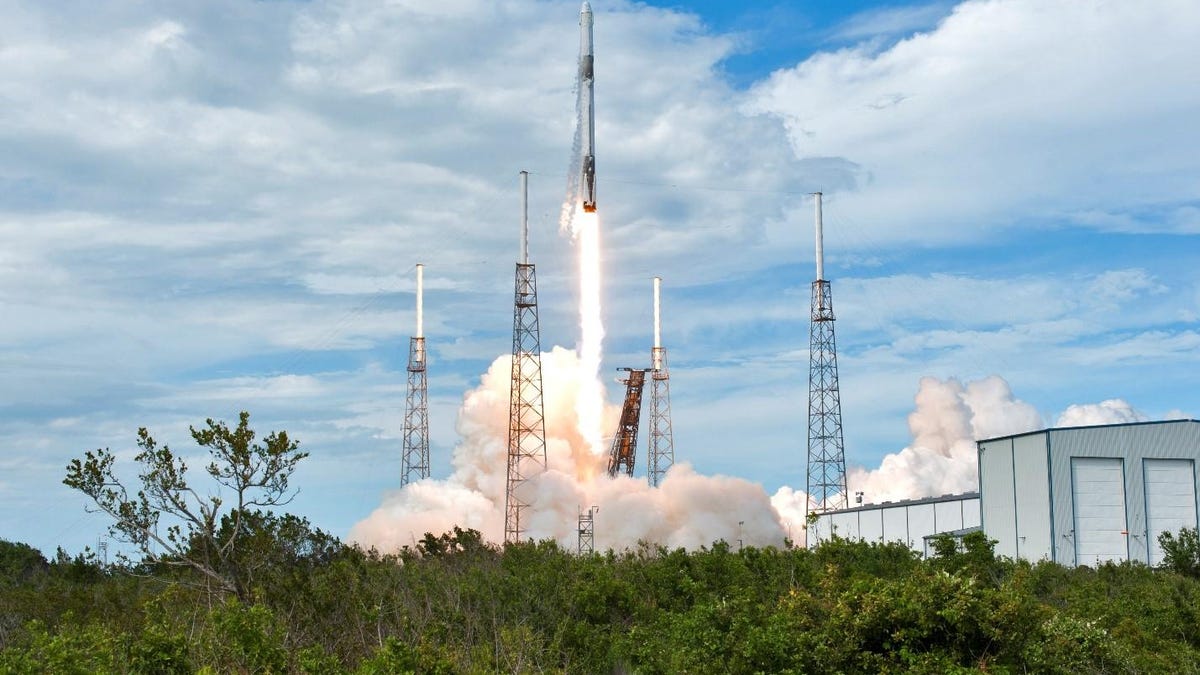Elon Musk's SpaceX sending ISS a new 'hand'
The next resupply mission to the orbiting research station will include a robot paw for the biggest arm to ever come out of Canada.

The most recent commercial resupply mission to the International Space Station blasts off aboard a SpaceX Falcon 9 rocket in April.
SpaceX is set to send something up to the International Space Station next week that will help the ISS get a better grip on things.
Elon Musk's rocket company is scheduled next Friday to blast one of its used Falcon 9 boosters and Dragon capsules towards the orbiting station. The Dragon will be filled with all kinds of cargo, including supplies for the crew, science experiments and a new "hand" for Canadarm2.
The Canadian Space Agency's robotic arm has a Latching End Effector (LEE) on each end that together function like hands to grapple payloads and visiting spacecraft. One LEE failed last year and so next week's commercial resupply mission, referred to by NASA as CRS-15, will include a replacement.
These robotic mitts also allow Canadarm2 to "walk" on its hands to different locations on the outside of the ISS. It's kind of like a futuristic, microgravity circus routine, but in slow motion.
Also hitching a ride on the SpaceX Dragon will be experiments designed to study the growth of nanotubes and water stress in plants, among others.
Oh, and let's not forget the toy dog representing Lewis and Clark's Newfoundland. It will ride along to celebrate both the 50th anniversary of the National Trails System and NASA's upcoming 60th birthday. That's an appropriately long way for a dog to travel for a photo op with some astronauts.
The SpaceX Falcon 9 first stage that will boost the also previously used Dragon capsule to orbit will be the same rocket that sent NASA's Transiting Exoplanet Survey Satellite (TESS) to space in April. There's been no word of plans to land the booster again, as SpaceX is using up some of its older rockets. In fact, this may be the final launch before the company switches to sole use of its "Block 5" Falcon 9 supply, which are designed to be flown several times each without refurbishment.
The launch is currently set for Friday, June 29 at 5:41 a.m. ET from Kennedy Space Center in Florida. You can watch live via NASA TV and SpaceX's live webcast. We'll be sure to embed one of those videos for you here as well.
Crowd Control: A crowdsourced science fiction novel written by CNET readers.
Solving for XX: The tech industry seeks to overcome outdated ideas about "women in tech."

